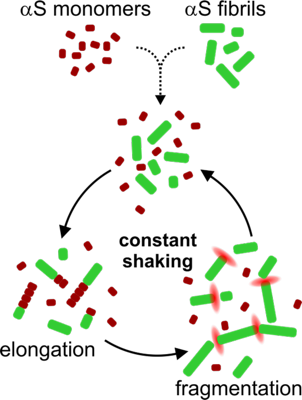Quantification of amyloid fibrils in biological fluids as biomarker for PD
Parkinson’s disease (PD) is one of the most common neurodegenerative disorders. The diagnosis of PD is difficult and mainly based on symptoms. Recently alpha-synuclein amyloid fibrils have been identified as a suitable biomarker for PD. The number of such fibrils in biomatrices is however incredibly low. To allow for the detection of such low number of fibrils seed amplifications assays (SAAs) have been developed. However, these assays are not quantitative; they can potentially be used for diagnosis but are not suitable to monitor the effect of treatments or disease progression. The goal of this project is to explore quantitate alpha-synuclein amyloid fibril detection in biomatrices like blood serum or cerebrospinal fluid.

Approach: You will use a direct imaging approach to monitor seed amplification. Whereas the “traditional” seed amplification assays rely on an increase in fluorescence intensity of an amyloid fibril binding dye you will follow the increase in number of fibrils in time.
You can:
- Prepare samples with known numbers of amyloid fibrils.
- Use wide field single particle detection to observe the increase in fibril number in time.
- Find clever ways to automatically detect these (elongated) fibrils in recorded videos.
- Determine fibril doubling times and derive the initial number of fibrils in the sample.
- Test the developed approach in different biomatrices.
If you are interested, please feel free to contact us. Within the Nanobiophysics group we try to provide you a BSc/MSc assignment that fits your expertise and interest.
Please contact:
Mireille Claessens: m.m.a.e.claessens@utwente.nl, Zuidhorst 163
Christian Blum: c.blum@utwente.nl, Zuidhorst 168
